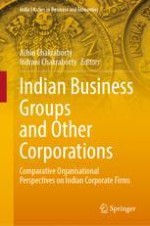This book contributes to growing literature on the role of business groups in the development of corporate sector and contains perspectives from the Indian economy. It brings together an array of well-researched papers that provide a comprehensive understanding of evolution and nature of the Indian business groups, as well as various aspects of their functioning. All chapters are primarily empirical, use appropriate quantitative techniques and are strongly grounded in relevant theories. This fine combination of data, techniques and theories is expected to provide the reader with in-depth understanding of the complex structures and behaviour of firms affiliated to business groups. Readers interested in the Indian corporate sector, especially Indian business groups, will find the book useful.
